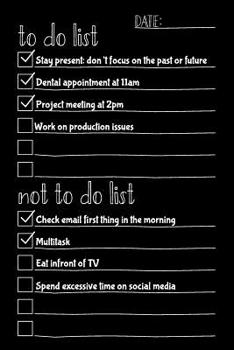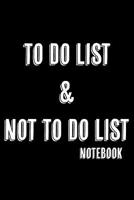To Do List Not To Do List: Notebook For Improving Productivity And Focus On The Tasks That Matter
Did you know that your personal and business productivity depends on how and where you choose to spend your time? Creating a to do list helps to get things done. Creating a not to do list helps in avoiding distractions and focus on accomplishing the things that matter.
Convenient 6 by 9 size so you can always carry it with you120 Pages Paperback professional matte coverEach page has a place to enter date, to do list and not to do listPerfect for
Business peopleOffice CoworkersMothersWorking moms/dads/step moms/stepdadsWork from home momsBusiness womanCoworkerHigh School/College StudentsCreative PeopleGirls /Boys /TeensSecretariesMusiciansAdultsTeachersGirl Scout Troop leadersVolunteersAnd for all those who want to accomplish more in their tasksUsed as
To do diaryTo do list bookTaking notes To do list notepadNot to do list padand so on...Buy one for yourself or as a gift
Format:Paperback
Language:English
ISBN:1073133028
ISBN13:9781073133024
Release Date:June 2019
Publisher:Independently Published
Length:124 Pages
Weight:0.39 lbs.
Dimensions:0.3" x 6.0" x 9.0"
More by Deeri Press
Customer Reviews
4 customer ratings | 4 reviews
There are currently no reviews. Be the first to review this work.























